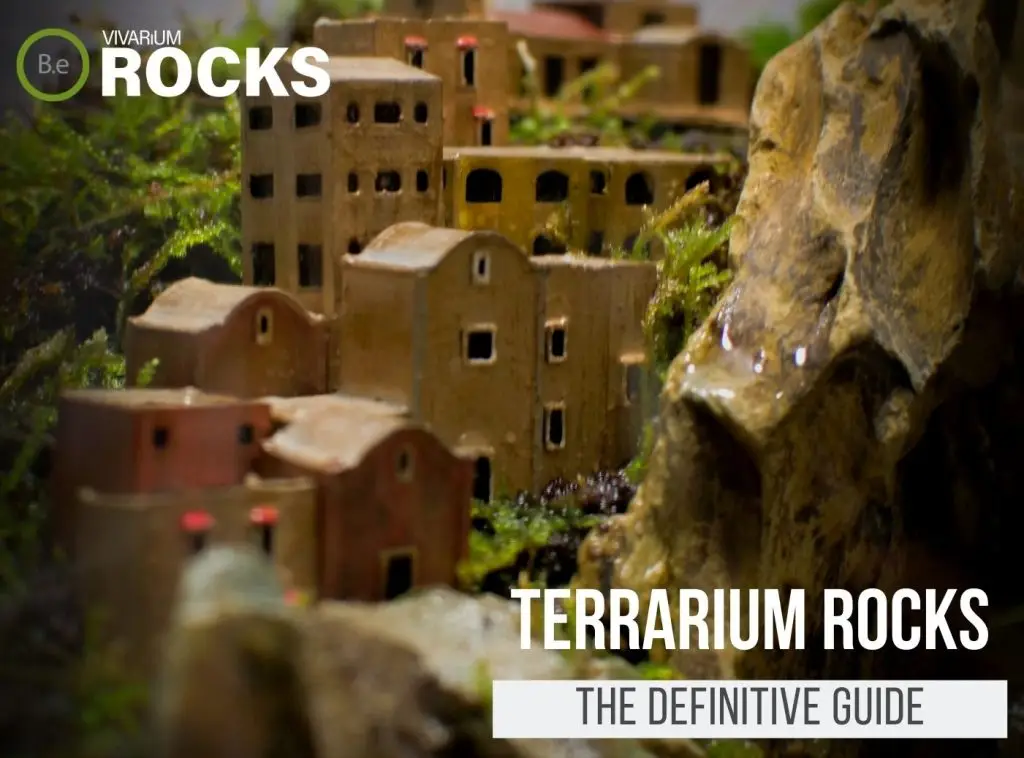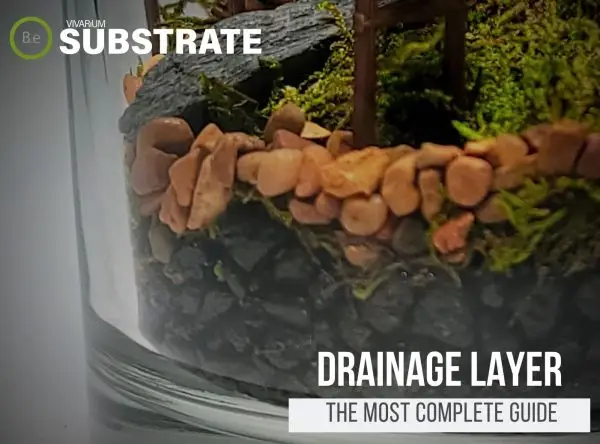Terrariums are a great way to bring a bit of the outdoors inside. But in order to keep your terrarium healthy, it’s important to ensure that it has some type of drainage layer. This layer is an essential component of any terrarium.
It helps keep the soil from becoming oversaturated while also providing the necessary drainage for your plants. In this article, we’ll explain what a terrarium drainage layer is, the materials used to create it, and how to maintain it for maximum efficiency.
Read on to learn more about how to ensure your terrarium has the best drainage layer possible!
Table Of Contents:
ToggleWhat is a Terrarium Drainage Layer?
A terrarium drainage layer is a layer of material placed at the bottom of a terrarium to provide drainage and prevent soil from becoming oversaturated. This layer aids in creating an environment where water can move freely throughout the terrarium without pooling or stagnating in one area.
Common materials used for terrarium drainage layers include gravel, stones, sand, and soil. False bottoms are another option that works as an alternative to what this guide will cover. The drainage layer should be placed beneath the soil and should extend the entire length and width of the terrarium.


Why is it Important?
A drainage layer is important because it provides the necessary draining of excess water for your plants. It also prevents the soil from becoming oversaturated In addition, it helps to create a healthy environment for your terrarium.
Without an effective drainage layer, water can accumulate in the terrarium, leading to root rot, plant stress, and other issues. An effective terrarium drainage layer will help to ensure that your terrarium plants are healthy and thriving.
Best Types of Materials Used for Terrarium Drainage Layers
There are a variety of materials that can be used to create an effective terrarium drainage layer. When deciding on the best material to use, look for something that doesn’t decompose or has a negative impact on the water parameters.
Gravel
Gravel is an excellent material for creating a drainage layer as it helps to keep the soil from becoming oversaturated while also allowing water to flow freely. Gravel is relatively inexpensive and easy to find, making it a popular choice for terrarium drainage layers.


Stones
Stones are a great material for terrarium drainage layers as they are lightweight, durable, and provide excellent drainage. They are also available in a variety of sizes and colors, making them an attractive choice for terrariums.


Sand
Sand is a great material for terrariums as it helps to keep the soil from becoming oversaturated and provides good drainage. Sand is also relatively inexpensive and easy to find, making it a popular choice for terrariums.


Activated Charcoal
Activated charcoal is a great material for terrariums as it helps to keep the soil from becoming oversaturated and provides good drainage. Activated charcoal typically works best when combined with gravel as an additive.


False Bottom
False bottoms are a popular terrarium drainage layer option that is made of a lightweight material such as plastic or foam. These make great alternatives to the common drainage layer materials with their lightweight and cost. False bottoms are great for terrariums that contain heavier plants and require extra drainage. They are also a great option for terrariums with limited space, as they take up less space than traditional drainage layers.


How To Create an Effective Terrarium Drainage Layer
Creating an effective drainage layer is important for the health of your terrarium plants. When creating your drainage layer, it’s important to use the right materials and to ensure that the layer is of the proper thickness and size. Here are the steps to creating an effective drainage system:
- Start by selecting the right materials for your drainage layer. Use the list above for more info regarding a particular material.
- Line the bottom of the terrarium with a layer of the chosen material. The drainage layer should extend the entire length and width of the terrarium and should be between 1-2 inches thick.
- Place a layer of landscape fabric over the drainage layer to help keep it in place.
- Add the soil and plants to the terrarium.
- Water the terrarium as needed.
Following these steps will help to ensure that your terrarium has an effective drainage layer, which will help to keep your terrarium plants healthy and thriving.
Tips for Optimizing Your Drainage
- Choose the right materials for your drainage layer. Common materials used for terrarium drainage layers include gravel, stones, sand, and soil. Choose materials that best suit your terrarium and the plants you’re growing.
- Use multiple layers. Using multiple layers of materials in your drainage layer can help to increase the effectiveness of the drainage.
- Create a slope. If your terrarium is deeper on one side, create a slope when you’re creating your terrarium drainage layer. This will help to ensure that water can flow freely throughout the terrarium and prevent pooling or stagnation.
- Regularly inspect the drainage layer. Over time, the materials in your setup can become compacted, which can reduce its effectiveness. Regularly inspect your drainage system and make adjustments as needed.
Troubleshooting Common Issues
Troubleshooting common issues with drainage layers can be a tricky process, as there are many factors to consider. One of the most common issues with drainage layers is that the filtering part of it can become clogged. This could result in poor water drainage and the potential for root rot.
Another common issue is that the soil can become oversaturated, leading to plant stress and other problems. In order to troubleshoot these issues, it is important to check the drainage layer for any blockages, remove any debris, and ensure that the soil is not too wet.
Additionally, it may be necessary to adjust the height of the drainage layer in order to ensure that the water is flowing properly. If the soil is still saturated after these steps, it may be necessary to replace some of the soil with a material that drains better.
How to Maintain Your Terrarium Drainage Layer for Maximum Efficiency
Maintaining your drainage system is an important part of keeping your terrarium healthy. Regular maintenance can help to ensure that the drainage layer is functioning properly and that the plants are receiving the optimal amount of water. Here are a few tips for maintaining your terrarium drainage layer for maximum efficiency:
- Check the drainage layer regularly for any clogs or debris. If you notice any clogs, use a spoon or tweezers to carefully remove them.
- Test the drainage layer periodically by pouring a small amount of water over it. If the water accumulates in one area or doesn’t seem to be draining properly, you may need to adjust the layer.
- If the drainage layer becomes compacted over time, it may need to be replaced or refreshed. You can do this by adding a layer of gravel or stones on top of the existing layer.
- If you notice any root rot or plant stress, it may be a sign that the drainage layer is not functioning properly. If this is the case, you may need to adjust the drainage layer or add more of it.
By following these tips, you can ensure that your drainage is functioning properly and providing your plants with the necessary drainage for optimal health. Regular maintenance and monitoring of your terrarium drainage layer is an important part of keeping your terrarium healthy and thriving.
Conclusion
A terrarium drainage layer is an essential component of substrates, as it helps to provide the necessary drainage for your plants while also protecting the soil from becoming oversaturated. With the right materials and maintenance, you can ensure that your terrarium has the best drainage layer possible.
We hope that this article has helped you to understand what a drainage layer is, the materials used to create it, and how to maintain it for maximum efficiency. With the right drainage, you can ensure that your terrarium is healthy and thriving!
Frequently Asked Questions
The thickness of gravel used for drainage should depend on the volume of water that needs to be drained. Typically, a layer of gravel should be at least one to two inches deep. For larger drainage areas, up to four inches may be necessary.
Yes, sand can be used as a useful drainage layer in certain applications. It has excellent filtration qualities, allowing water to easily pass through while trapping pollutants and preventing them from getting into the water supply. Sand can also be a great option for planter boxes and other areas with poor drainage.
The thickness of the drainage layer for a terrarium should be 1–2 inches.
The best drainage layer for a terrarium is a layer of well–draining, organic material such as gravel, charcoal, or coarse sand. As an alternative, a false bottom could be used as well, which usually consists of plastic or PVC frames.
Large rocks should not be put at the bottom of a terrarium. The bottom of a terrarium should be set up on a layer of gravel or any pebble-sized substrate. The larger rocks can be used as a decorative top layer.
No, a drainage layer is not typically needed for a vivarium. However, it may be beneficial to add a layer of water-absorbing material beneath the substrate to prevent excessive moisture buildup.
